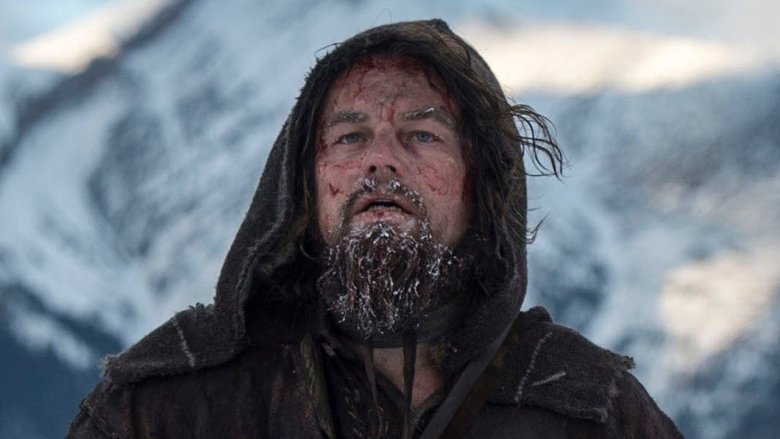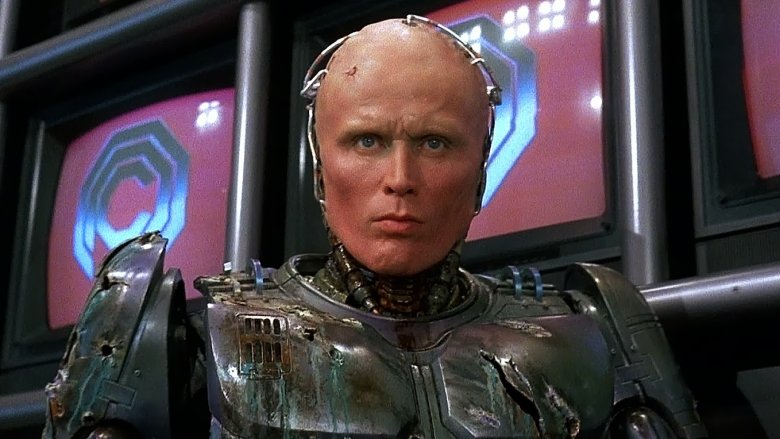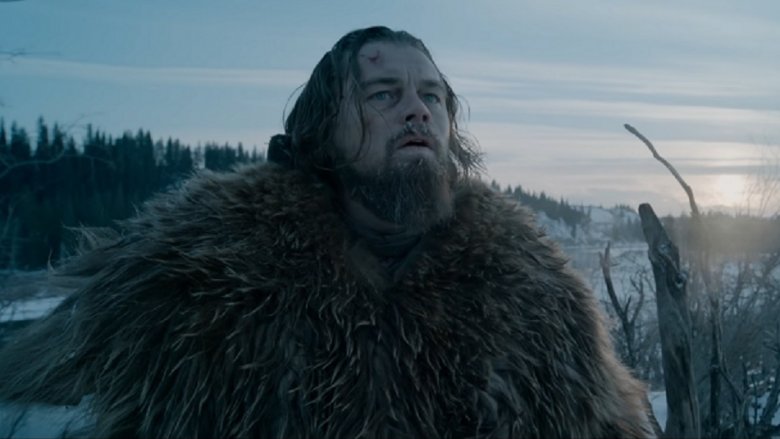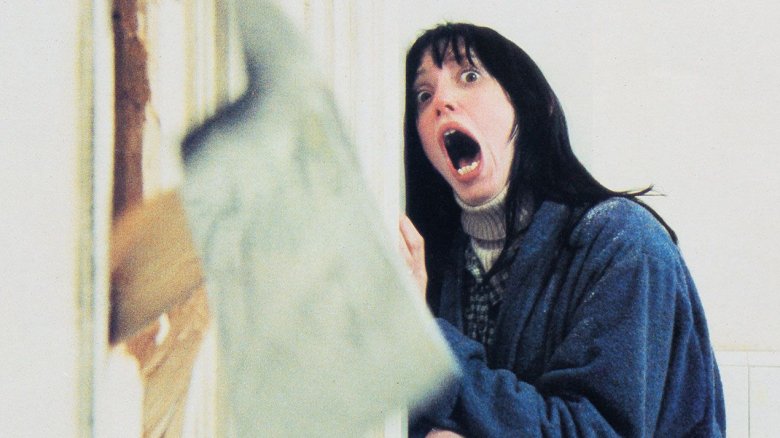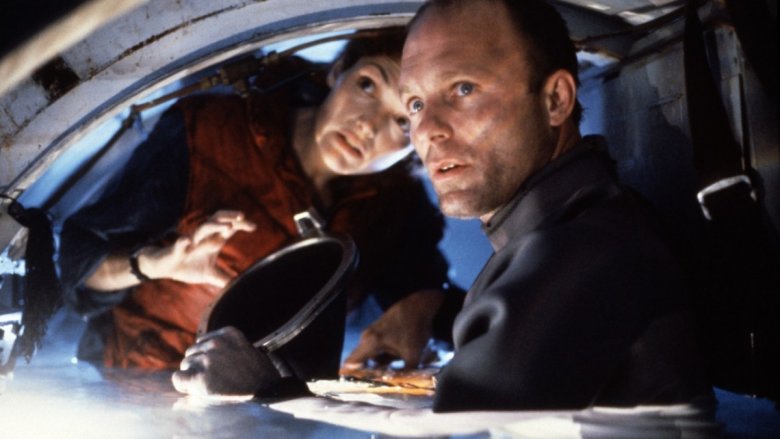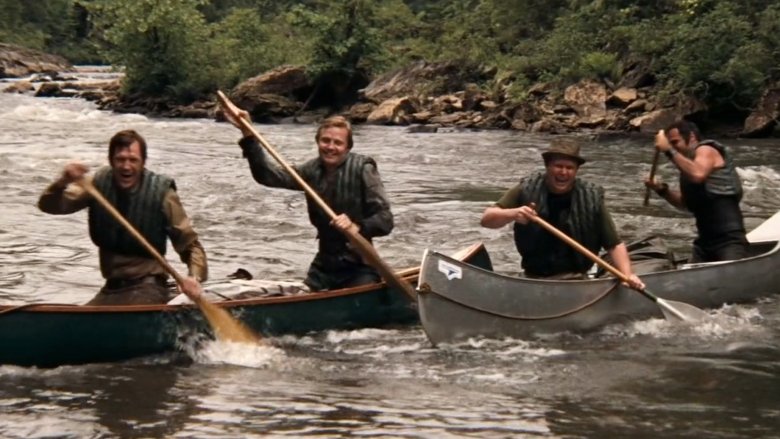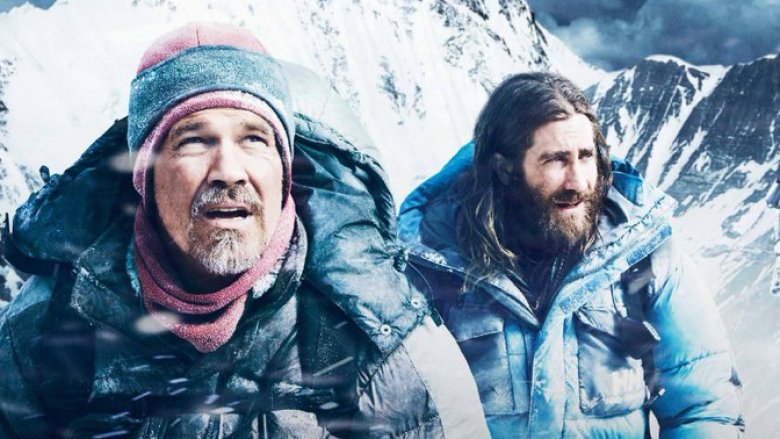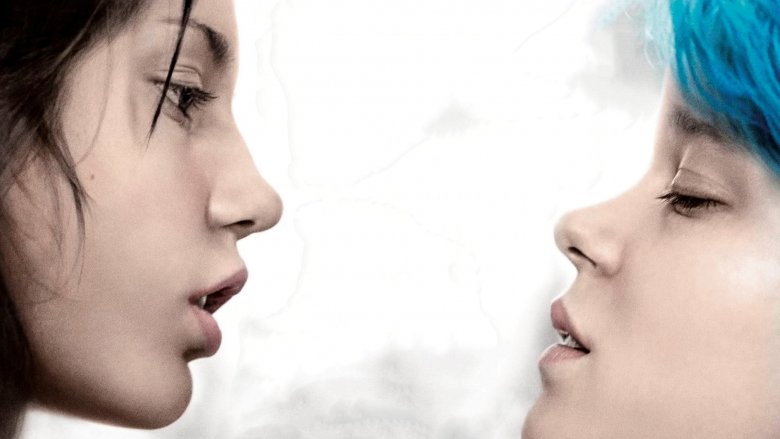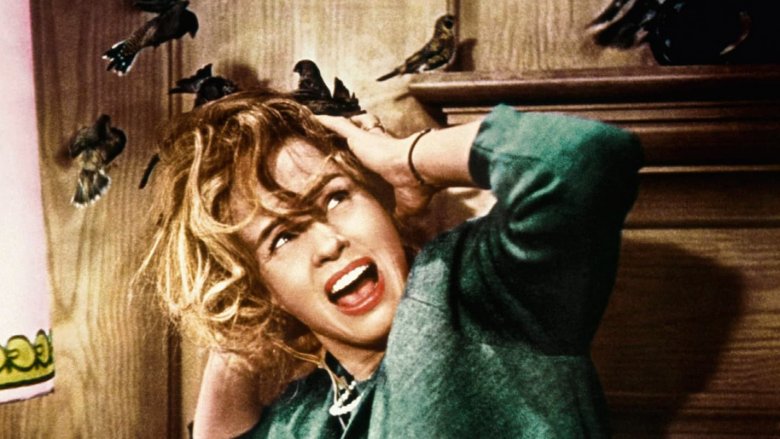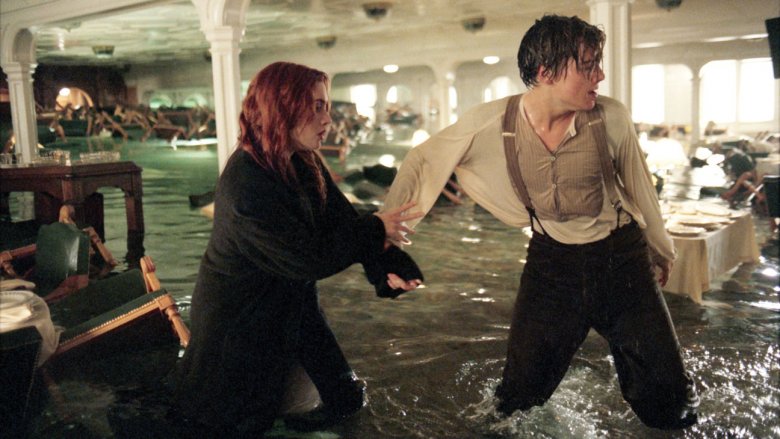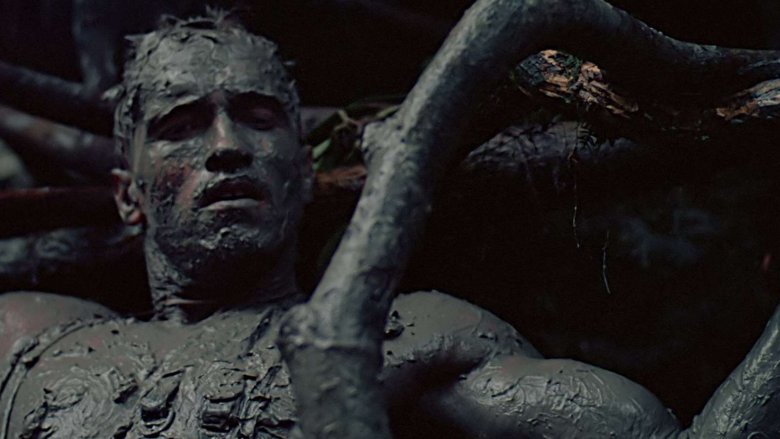Actors Who Endured Horrible Conditions During Filming
We like to think of being a famous Hollywood actor as the ultimate fantasy job. You get paid obscene amounts of money to essentially play pretend, you're fawned over by legions of adoring fans, and your giant paychecks mean that if you feel like taking a year or two off, you probably can. Sure, it can be kind of a pain to deal with the constant stream of paparazzi grilling you about why you're wearing what you are and whether the latest rumor about your love life is true, but the case can be made that if you didn't want the attention, you may not have become an actor.
But if it's true that great art is produced through suffering, then the following actors might have made some of the greatest films of all time. Everyone knows working on a film set can involve long hours and repeated takes, but these actors endured shoots that were less like a daily hassle and a lot more like prolonged torture. They performed their roles under conditions that would have had any normal person sprinting for the nearest exit; call them crazy, but nobody can suggest they're not dedicated to their craft.
RoboCramped
Peter Weller has had a long and successful career in TV and film, but to most of us, he'll always be Alex Murphy, a.k.a. RoboCop. The production of the 1987 classic, however, was not without hiccups. Weller's costume (as he explained in an Ain't It Cool News interview), designed by professional mime and Juilliard associate Moni Yakim, was delivered to the set significantly late, forcing Weller to practice Murphy's post-transformation movements without it. When it finally arrived, this turned out to be rather a waste of time — as it took ten hours to put on, and rendered Weller practically immobile.
Only one scene was shot with this version of the suit before everyone involved decided there was no way it could work. Conflict exploded between famously temperamental director Paul Verhoeven, effects artist Rob Bottin, writer Ed Neumeier (at the time too young to realize the folly of instigating conflict with Verhoeven), and Orion Pictures head Mike Medavoy, who threatened to straight up cancel the film if they couldn't figure it out. Verhoeven was ready to fire everyone, the production was dangling by a thread — and then, at Weller's suggestion, Yakim was called in to rescue the film. He calmly stepped into the chaotic production and modified the suit over a weekend, then spent two weeks designing a whole new movement set for RoboCop and teaching Weller how to execute it. So, if RoboCop is one of your favorites (which it is, of course) thank the mime who saved it.
DiCapsicle
The brutal conditions endured by the characters in Alejandro G. Iñárritu's The Revenant weren't created by movie magic — the director chose to shoot the film on location in the remote wilderness of Alberta, Canada, during a time when temperatures rarely crept above zero. Before the film's release, it was reported that poor communication between producers and crew had led to massive walk-offs. Many crew hadn't been prepared for the conditions they had to endure, which finally got so bad that Iñárritu was forced to shut down the production for five weeks when the cold caused the cameras to stop working.
It was an extreme-weather gauntlet for all involved, but star Leonardo DiCaprio arguably got the worst of it. After his character's assault by an angry bear, DiCaprio was forced to perform in these conditions while wearing 47 different pieces of prosthetic makeup which took five hours to apply; the bearskin he wears through much of the film would become saturated and freeze solid, and DiCaprio was constantly struggling to avoid hypothermia. But perhaps his greatest indignity: being made to eat an actual bison liver onscreen, after a prop liver failed to achieve the desired effect. This wouldn't exactly be pleasant for anyone — but DiCaprio, ever the committed actor, has been a vegetarian since 1992. Nobody can say Iñárritu didn't achieve the desired effect; The Revenant is one of the great survival yarns of all time, and all of that suffering is right there on the screen.
A director who was REDRUM to work with
Anybody who has ever worked with the great Stanley Kubrick would likely use two words to describe him: "genius," and another one which cannot be printed here. There have been few more demanding directors in film history, and the production of his masterpiece The Shining — which also took place chiefly in a cold, isolated location — was famously tough on everyone involved. The director completely broke actor Scatman Crothers (who portrayed kindly psychic Dick Halloran); after 40 takes of the scene in which his character is killed, Crothers broke down and cried, screaming, "What do you want, Mr. Kubrick?" But even he got off easy compared to Shelley Duvall.
The director was constantly critical of her acting, and relentlessly bullied her into displaying just the right notes of terror and hysteria. He even explicitly instructed his cast not to sympathize with Duvall, even while pushing her to her absolute limit — the scene in which her character Wendy Torrance tries to fend off an increasingly menacing Jack with a baseball bat somehow required a mind-boggling 127 takes before Kubrick was satisfied, a world record for a scene with spoken dialogue. Duvall cried so much during the grueling 500-day shoot that she literally became dehydrated. In a book on the director, Duvall somehow avoided calling him every name in the book while saying, "Stanley pushed me and prodded me further than I've ever been pushed before. It's the most difficult role I've ever had to play."
Into the Abyss
James Cameron is another famously particular director, and his gung-ho style on the set of 1989's The Abyss still irks leads Ed Harris and Mary Elizabeth Mastrantonio to this day. The film largely takes place underwater, with the production's main headquarters being an abandoned nuclear reactor 40 feet below the waves, which led to all kinds of problems. Cast and crew were forced to constantly decompress, actors were made to relieve themselves in their wetsuits to save time, and Cameron himself nearly died when he ran out of air while shooting a scene. So did Harris, who admitted he thought he was done for when a mishap with an oxygen regulator left him inhaling a mixture of air and water during a scene.
As for Mastrantonio, the scene in which her character is resuscitated after almost drowning sent her over the edge after what had already been an arduous shoot. Freezing, soaking wet and topless, she endured hours of Harris pounding on her chest and shouting in her face before suffering a complete emotional breakdown and storming off the set screaming. She has also expressed extreme reluctance to work with Cameron again, owing to his apparent disregard for the safety and well-being of his cast and crew — who not-so-lovingly nicknamed the production The Abuse.
Drowning Banjos
Deliverance is known primarily for one brutal, excruciating scene — you know the one — but that scene isn't the reason why director John Boorman freely admits the film could never be made today. The story involves four friends (played by Jon Voight, Burt Reynolds, Ned Beatty, and Ronny Cox) whose whitewater rafting trip takes them into the heart of hillbilly darkness, and it's the whitewater rafting sequences which nearly made mincemeat of Boorman's cast. Speaking with the Guardian, the director said, "You'd have to have a risk-assessment officer on hand at all times. All we had was a diver with us. And he did have to go into the river and pull people out. One day Ned Beatty went down and he didn't come up. He was gone, I don't know, maybe two minutes or so. I always had the fear I was going to lose one of the cast."
Beatty indeed nearly drowned in that incident, and he wasn't the only one. In his memoir, Reynolds related his own near-death experience on the shoot: "I looked around and there was a tidal wave coming at me. I went over the falls and... I hit a rock and cracked my tailbone, and to this day it hurts. Then I went down to the water below and it was a whirlpool. I couldn't get out... about 15 minutes later they saw this nude man come out," he said. "It had torn everything — my boots and everything off."
Peak directorial torment
2015's Everest is the harrowing true story (with some dramatic liberties taken, of course) of the fate that befell an expedition to the world's most famous summit in 1996. About two-thirds of the film was shot on location, and if you know anything at all about Mt. Everest, then you know that the shoot was every bit as hazardous as it looked onscreen. The mountain regularly kills those who try to conquer it; in 2017, four climbers died on Everest in the space of just one week. For the actors involved in the production of director Baltasar Kormakur's film, including Jake Gyllenhaal and Josh Brolin, the shoot was nothing short of brutal.
With daytime temperatures hovering around 30 below zero, the cast had to contend with low oxygen levels and nights spent shivering in tiny lodges. Said Brolin, "[I was thinking], 'OK, now I'm freezing and I haven't felt my feet for three days and I'm kind of done with this whole idea.' But that is what [Kormakur] was looking for." He couldn't have been more right: Kormakur opined that "There's nothing better for a director than an angry actor," and he elaborated in a Film Journal interview that he "walked as far as the insurance company would let us... Actually, you can get pretty good performances out of those conditions. Actors just kind of deliver because they want to get out of it."
Regret Is the Warmest Color
Blue Is the Warmest Color shocked everyone by winning the Palme D'Or at the 2013 Cannes Film Festival — not because it wasn't deserving, but because most of the film's pre-release publicity centered on its very long, very graphic lesbian sex scenes. Stars Adele Exarchopoulos and Lea Seydoux were singled out for their extraordinarily committed performances — but to hear them tell it, director Abdellatif Kechiche left them little choice.
Speaking with The Daily Beast, Exarchopoulos described her excitement at being cast and her gameness for the role — "But once we were on the shoot," she said, "I realized that he really wanted us to give him everything. Most people don't even dare to ask the things that he did, and they're more respectful." The first sex scene alone took ten days to shoot, par for the course for a production that dragged on. In the same interview, Seydoux said, "We couldn't see the ending. It was supposed to only be two months, then three, then four, then it became five-and-a-half. By the end, we were just so tired... In the first scene where we cross paths and it's love at first sight, it's only about 30 seconds long, but we spent the whole day shooting it — over 100 takes." For his part, Kechiche was defensive and borderline hostile about his stars' statements — and while both have said they remain friendly with him, they agree they won't work with him again.
Birds-brained
Legendary director Alfred Hitchcock had a long-standing reputation of being tough on his female talent, and it's doubtful that anyone suffered as much on one of his sets as Tippi Hedren, star of 1963's The Birds. It began, the actress alleged in her memoir, when Hitchcock attempted to sexually assault her in his limo on the way to the set; when she rejected his advances, the director became extremely cold toward her, and would become "petulant and icy" if he happened to spot her talking to other men on the set. Hedren said the unwanted advances continued, and when she wouldn't return his affections, things got dangerous.
For the famous sequence in which her character is attacked by birds, mechanical birds were to be used — but Hitch decided to use real ones instead. "There were boxes of ravens, gulls and pigeons that bird trainers wearing gauntlets up to their shoulders hurled at me, one after the other, for a week," she recalled. The ordeal caused Hedren to suffer a nervous breakdown, and a doctor ordered her to rest — but Hitchcock objected. "Hitchcock said, 'She can't rest for a week, we have nobody else to film,'" she claimed, "And the doctor said, 'What are you trying to do? Kill her?'" Hedren blamed Hitchcock for stymieing her career in the aftermath of the shoot, but insisted, "I got over Hitchcock a long time ago because I wasn't going to allow my life to be ruined because of it."
Down with the ship
In an Empire Online retrospective, actor Billy Zane succinctly pointed out that anyone signing up for a film about the sinking of the Titanic, directed by James Cameron, should have known what they were in for. "Were people unhappy because they were cold and wet?" he said. "What movie did they think we were making?" A fair point — but Cameron's hard-driving style, compounded by the nearly impossible filming conditions required to accurately depict the the disaster, had some cast and crew ready to bolt, or worse. In the same piece, director of photography Russell Carpenter summed up his feelings just as succinctly: "I thought, 'Okay, I'm going to kill myself.' I couldn't run away to Mexico; I was already there."
Cameron's insane level of attention to detail and famous impatience with anyone not on the same page would have been trying for cast and crew even had they not been forced to spend half the shoot freezing cold, soaking wet, or both. On set injuries abounded, Cameron once threatened to fire anyone who needed to go to the bathroom, and star Kate Winslet came down with hypothermia — but perhaps the worst was saved until the shoot's final night, during a party for cast and crew. A disgruntled crew member spiked the soup prepared for the party with a hallucinogenic substance, causing 80 people to get sick — and whoever did it managed to avoid getting caught.
Get to the crapper
Predator is an unimpeachable sci-fi horror classic, but its production was not without its bumps — including the firing of original Predator Jean-Claude Van Damme, which necessitated a complete redesign of the monster. This, among other factors, caused the production to drag on to the point where about half the film had been completed in the allotted shooting time, leading to studio threats of pulling the plug — but all of this was compounded by director John McTiernan's decision to shoot the film in Central America during the middle of a sweltering summer.
Needless to say, the extended shoot made the unpleasant conditions nearly unbearable for everyone. But it was particularly tough on star Arnold Schwarzengger — and ironically, it wasn't because of the heat. The nighttime scenes during which his character slathers himself in mud (which took three weeks to film) saw the star constantly on the edge of hypothermia, even resorting to getting drunk to take the edge off. Actor Kevin Peter Hall had a tough time seeing out of his Predator suit, making him prone to constantly bashing Arnie in the face during fight sequences — and to top it all off, the future Governator came down with food poisoning. During a Reddit AMA, he explained, "I got really sick in Puerto Vallerta. I will spare you the details, but while I was on a run, the runs hit. I ran to the side of the road and some cars driving by got quite the show."
